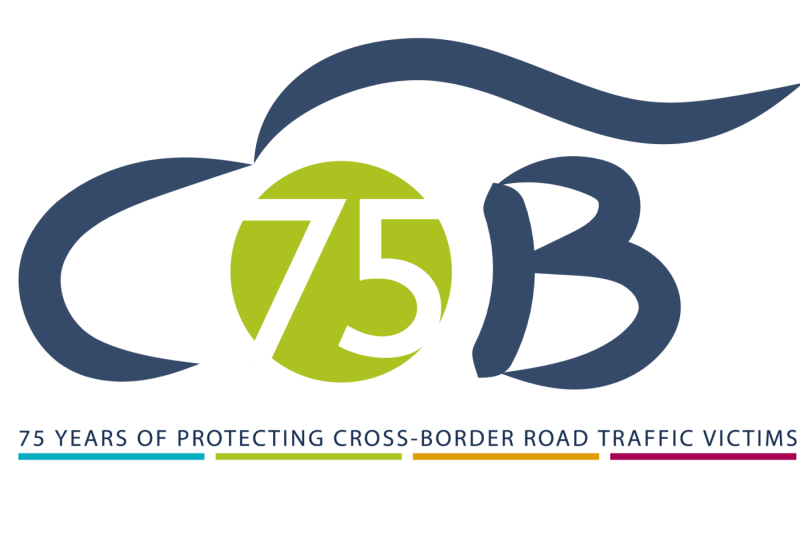
As part of our celebrations to mark the 75th Anniversary of COB, we wanted to reflect on the rich and meaningful history that has made the organisation what it is today.
Over the course of the next 12 months, this series of articles will focus on key ‘milestones’ from the life of COB, telling the story behind these moments and why these events mattered.
We hope the series will help provide a better understanding of COB, our mission and what has driven our activity over the last 75 years.
Today, drivers seamlessly cross borders within the COB system, encountering no administrative barriers and benefiting from international insurance support. It is hard to believe that what we now consider normal is the outcome of a long process that began at a time when international car travel required the time-consuming and expensive process of purchasing frontier insurance in every visited country. It was a time when victims involved in accidents with vehicles registered abroad didn't always have proper protection offered to them.
These were the issues that impacted international motor transport up to 1949. Solutions were needed.
It was in these circumstances that COB was formed 75 years ago. To discover how, fasten your seat belts! We are taking a ride towards the origins of what eventually would become the creation of COB.

At the beginning of the 20th century, the expansion of the vehicle fleet resulted in a surge of road accidents and an increase in travels abroad. Consequently, decades before the establishment of the COB system, initiatives for facilitating international car travel already began to emerge.
In 1919, Denmark became the first country in Europe to implement compulsory motor insurance legislation, which was soon adopted by other countries. For international travels, foreign motorists were required to purchase frontier insurance upon entry into a country, a notably cumbersome and costly procedure.
To address this issue, the Nordic countries (Denmark, Norway, Finland, and Sweden) introduced an alternative solution to frontier insurance in the late 1920s: a policy was created aimed at providing coverage across these four countries. This system of mutual recognition of Motor Third Party Liability (MTPL) insurance will later inspire the Green Card System and the 1st European Motor Insurance Directive.
Meanwhile, as international traffic increased these countries started issuing pre-printed policies for visitors from other countries, such as Germany.
In parallel, in the second half of the 1930s, UNIDROIT (the Rome Institute for the Unification of Private Law) tackled the issues of a uniform code on motorists’ liability and a uniform legislation for motor insurance. A preliminary draft was released, intended for adoption by national legislators. Regrettably, the studies were interrupted by the Second World War.

After the war, as Europe started its reconstruction and international relations stabilised, the increase in international motor traffic amplified the urgency to address insurance-related issues.
In 1947, the matter was referred to UNECE, the Economic Commission for Europe within the newly established United Nations. UNECE invited insurance organisations from different European countries to collaborate in finding a solution to the persistent problems faced by motorists traveling across borders within Europe.
The question was posed to the various governments on whether the legislation of their country could support an agreement where insurers would compensate victims of road accidents covered by insurers from other countries. The responses were positive, which led the governments, assisted by insurance experts, to formulate the concept of the International Motor Insurance Certificate, inspired by the system already established in the Nordic countries during the 1930s.
Image of Inland Transport Committee meeting © United Nations Archives at Geneva

On 25 January 1949, after two years of dedicated efforts, a crucial step forward was taken with the issuance of Recommendation No. 5 by the Sub-Committee on Road Transport of the Economic Commission for Europe. This recommendation aimed not only to facilitate cross-border road traffic but also to establish a system for compensating victims of road accidents occurring in their country of residence but caused by a vehicle registered in another country.
Several of the principles and steps adopted would also give rise to the creation of the Green Card system as we know it today.
From 25 to 27 May 1949, the first international conference of motor insurers convened in London, organised by the Motor Insurers' Bureau of the United Kingdom (MIB). And this is where the story of COB truly began.
The conference ratified ECE's Recommendation No. 5 and established the Council of Bureaux as an international organisation of 14 member countries: Belgium, Czechoslovakia, Denmark, Finland, France, Greece, Ireland, Liechtenstein, Luxembourg, Netherlands, Norway, Sweden, Switzerland and United Kingdom.
Mr. Guy F. Johnson from the UK was appointed as the first chairman of the Council of Bureaux and the MIB was entrusted to provide Secretariat services to the association.
So, 1949 was the moment COB was born. Little could anyone in that room have predicted how the organisation would grow and flourish over the subsequent 75 years, reaching a point where we now represent 50 members across 46 countries.
Mr. Johnson and the other original members of the Council of Bureaux began a journey that would greatly enhance motor transport across Europe and beyond. A drive that would ultimately support millions of victims of cross border road traffic accidents and the travel of tens of millions of travellers every year.
Of course, in order to reach this point the road we travelled needed a ‘green’ light - something that was to be provided in the form of a special card formally introduced in 1953 and which will be the focus for our next ‘Milestone in the Life of COB’.
Image of Guy F. Johnson © COB Archives
